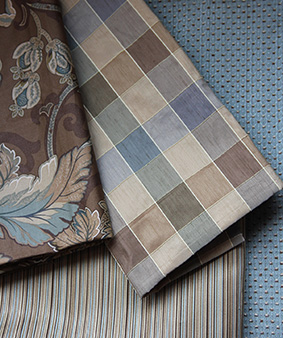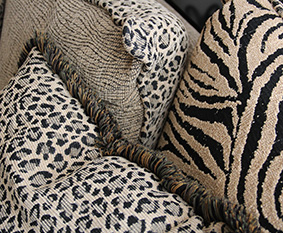Mixing patterns in your home decorating is a great way to add subtle texture, depth and drama to every room of your home. The key to doing this well is to keep all the patterns within your basic color scheme.

It is recommended that you dedicate about 75% of the room to your primary color, 15-20% of the room to your secondary color, and 5-10% of the room to your accent color.
Show your pattern mixing flair by using it to accent your windows. Choose window treatments in a pattern containing a contrast color along with your secondary or accent color.
Another key to mixing patterns is to make sure there is something in a solid color within the room upon which your eyes can rest.
Another good hint to follow is to keep the background colors in your patterns the same. You’ll probably want to keep these colors neutral-such as ivory, white, beige, light grey, brown, etc.

When you’re choosing the patterns you wish to mix, make sure there is a common thread throughout your room. This can involve the texture, color and/or size of the patterns chosen. You can mix and match all over the place and not look completely dysfunctional if there is some sort of similarity running throughout.
You really can mix patterns as diverse as plaids, flowers and stripes if you choose those with a common theme, as outlined above. For example, you could match the green in your floral print to a green stripe elsewhere in the room. If you’re not comfortable mixing patterns, try mixing textures instead. Or mix different intensities of the same color.
Take the size of the room into account. If you have a small room large, bright patterns may overpower it while a small print may get lost in a large room. You can always maintain one size print and then accent it with either smaller or larger prints.
